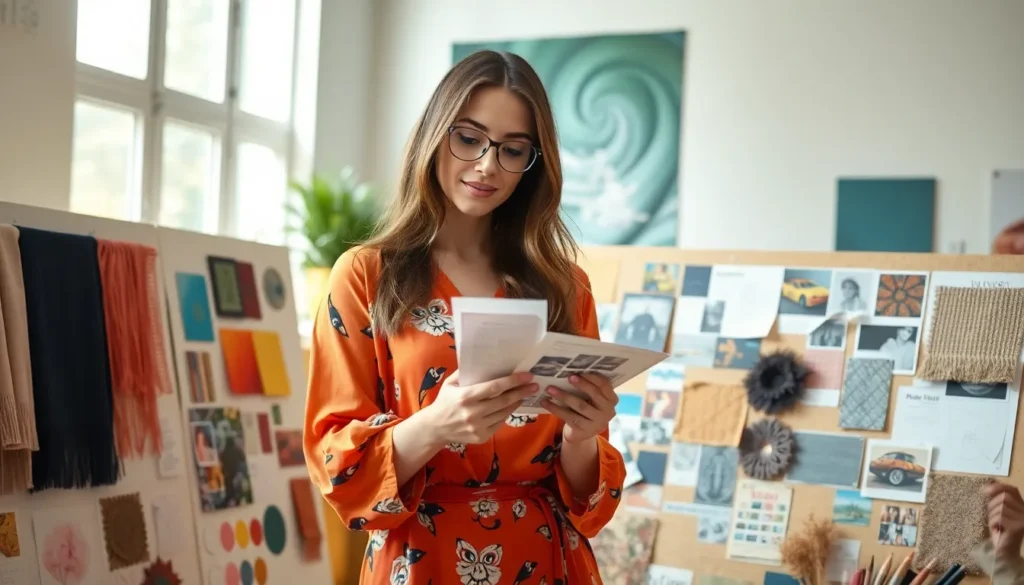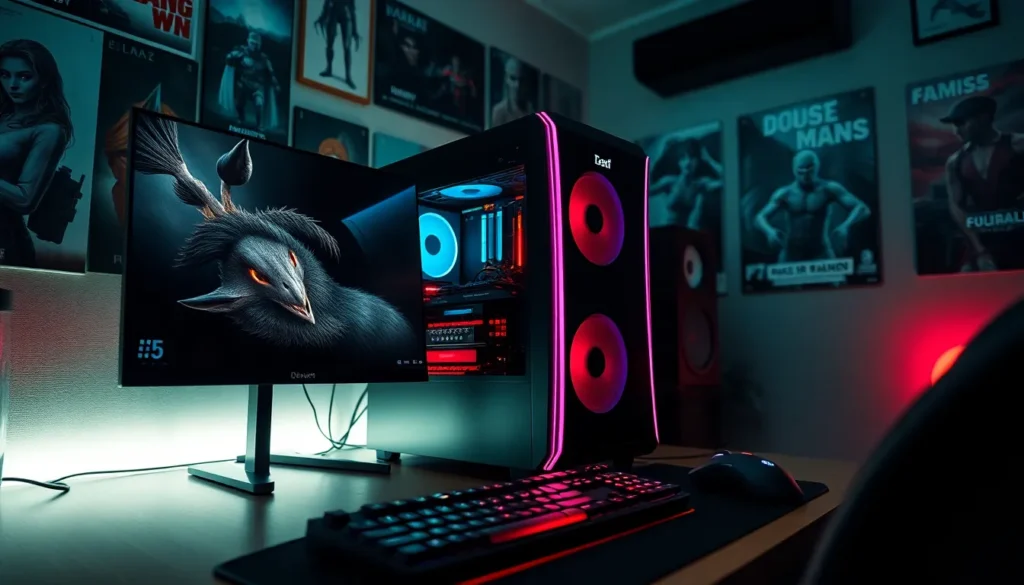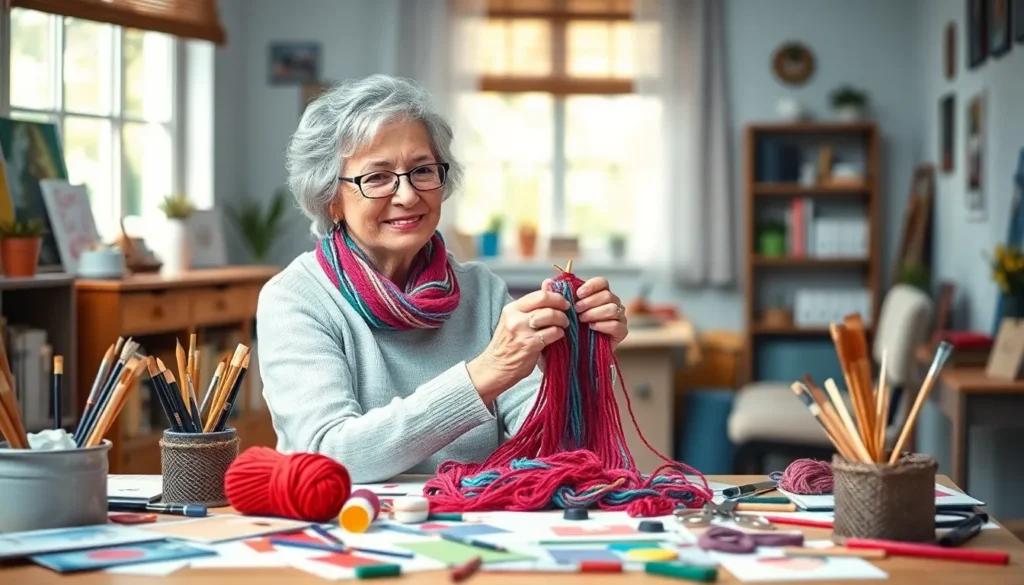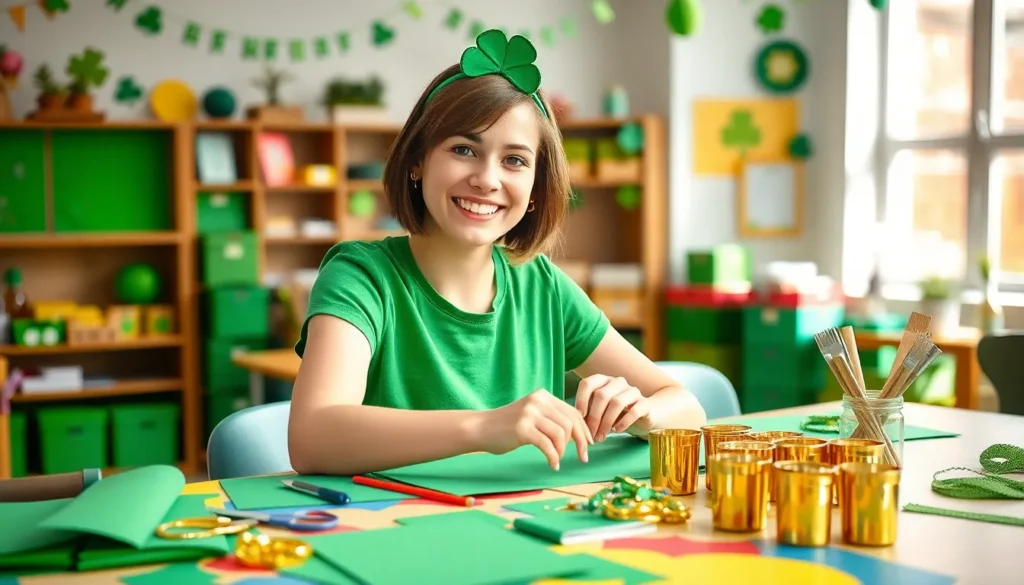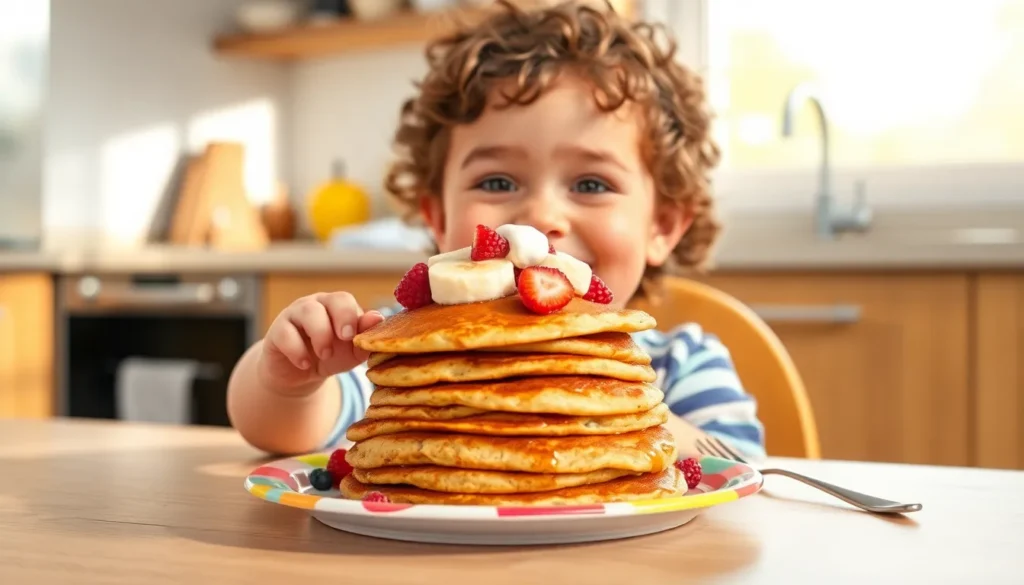Table of Contents
ToggleCreating a fashion mood board is like throwing a stylish party for your ideas, and everyone’s invited! It’s a visual feast where colors, textures, and inspirations collide to spark creativity. Whether you’re a seasoned designer or just someone who loves to play dress-up, a mood board can help transform a jumble of thoughts into a cohesive vision that even your closet will envy.
What Is a Fashion Mood Board?
A fashion mood board is a visual representation of ideas and inspirations related to style and fashion. It combines various elements, such as colors, textures, and images, to create a cohesive vision.
Purpose and Importance
Fashion mood boards serve multiple purposes. They clarify personal style by visually organizing diverse concepts. Mood boards inspire creativity, allowing designers and fashion enthusiasts to explore concepts freely. Additionally, they help communicate ideas effectively to clients or collaborators. Mood boards can enhance project presentations, providing a clear understanding of the intended direction. Many successful designers utilize them to establish a brand’s identity. Ultimately, mood boards energize the design process, encouraging exploration and innovation.
Key Elements
Key elements of a fashion mood board include colors, textures, and imagery. Colors play a vital role in evoking emotions and setting the overall tone. Textures provide depth and dimension, enhancing the visual appeal. Imagery comprises various sources like photography, fabric swatches, and sketches, showcasing the desired aesthetic. Fonts or typography can also express a brand’s identity or mood. Layout and arrangement contribute to the board’s overall impact. Every element should work together harmoniously, building a comprehensive representation of the fashion concept at hand.
How to Create a Fashion Mood Board

Creating a fashion mood board involves several key steps. Each step contributes to a cohesive vision.
Choosing a Theme
Selecting a theme sets the foundation for the mood board. Designers often consider current trends, personal style, or specific events. A well-defined theme helps narrow down colors, textures, and imagery that align with the desired aesthetic. For instance, a spring-themed board might focus on pastel shades and floral patterns. Establishing this focus leads to a more cohesive representation of ideas, ensuring every element contributes to the overall vision.
Collecting Visuals
Gathering visuals is crucial for crafting an inspiring mood board. Designers utilize various sources, including fashion magazines, online platforms, and social media. They collect images, fabric swatches, and even typography samples that resonate with the chosen theme. Organizing these visuals creates a visual library that can spark creativity. It’s essential to select diverse elements, as a rich assortment fuels innovative ideas and deepens the overall concept. Quality visuals play an integral role in effectively communicating the intended message.
Types of Fashion Mood Boards
Fashion mood boards come in various forms, each serving unique purposes and offering distinct advantages. Understanding these types enhances creativity and organizes inspiration effectively.
Digital Mood Boards
Digital mood boards streamline the design process with easy accessibility and flexibility. Designers often use tools like Canva or Pinterest to create vibrant, interactive collections. These platforms allow for seamless manipulation of images, colors, and textures. Users can quickly gather visuals from online sources, saving time during the brainstorming phase. Additionally, sharing digital boards with collaborators promotes instant feedback and encourages real-time adjustments. This format is especially beneficial for teams working remotely, ensuring everyone stays aligned on the concept.
Physical Mood Boards
Physical mood boards offer a tactile experience that digital formats cannot replicate. Creators assemble materials like fabric swatches, magazine cutouts, and sketches on poster boards or corkboards. This hands-on approach fosters a deeper connection to the materials and ideas. Designers often display their boards in studio spaces, inspiring creativity daily. Incorporating three-dimensional elements enriches the overall aesthetic and provides a tangible reference for projects. Furthermore, engaging with physical items can spark unexpected ideas, enhancing the design journey.
Tips for an Effective Fashion Mood Board
Creating an impactful fashion mood board requires attention to detail in both color schemes and layout. Utilizing these elements effectively can elevate the overall vision.
Color Schemes and Textures
Choosing color schemes plays a critical role in setting the tone of the mood board. Select hues that resonate with the theme and evoke desired emotions. For instance, warm colors can create a cozy atmosphere, while cool shades convey calmness. Incorporating a variety of textures enhances depth and interest in the visuals. Use fabrics, patterns, and materials that complement the colors, such as soft velvets paired with vibrant florals. This combination can stimulate ideas and enrich the board, allowing personal style to shine through.
Layout and Composition
Arranging elements thoughtfully ensures clarity and impact in a mood board. Begin by placing dominant visuals at focal points, guiding the viewer’s eye through the board. Balance visual weight by distributing images and textures evenly across the space. Using grids or freeform styles can create distinctive compositions, depending on the intended mood. Experimenting with layering adds dimension, while white space provides breathing room and enhances visibility. Overall, cohesive layout reinforces the message and supports the connective vision of the project.
Creating a fashion mood board can be a transformative experience for anyone involved in the fashion industry. It not only clarifies personal style but also serves as a powerful tool for communication and inspiration. By thoughtfully combining colors, textures, and imagery, individuals can express their unique vision and ignite their creativity.
Whether opting for a digital or physical format, the process encourages exploration and innovation. A well-crafted mood board can elevate design projects and establish a strong brand identity. As fashion continues to evolve, mood boards remain a timeless resource for both seasoned professionals and enthusiastic newcomers, making them an essential part of the creative journey.
